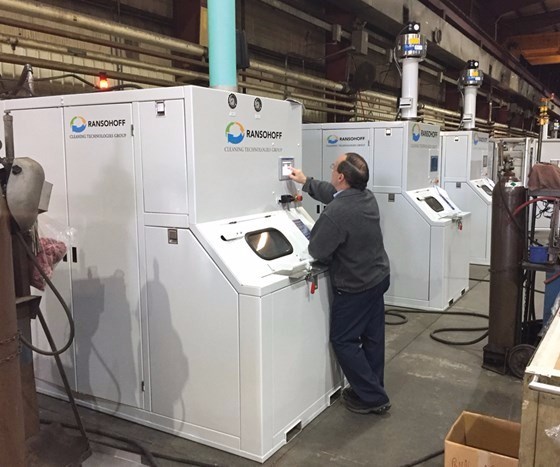Simplifying Aqueous Cleaning Decisions
The four basic methods for performing water-based cleaning operations in metalworking are outlined and described in this article, “Choosing the Right Aqueous Cleaning Operation.”

Aqueous systems can be designed to fit almost any part cleaning application and are safer than using solvents.
Choosing the most effective aqueous cleaning method is not always easy, especially when a shop considers all the factors involved. According to the article, “Choosing the Right Aqueous Cleaning Operation,” in addition to the customer’s own requirements, manufacturers must also factor in part geometry, the material used, the shape of the chips to be cleaned, throughput, and the need for quick change-outs between different types of parts, to name some considerations.
In this article, Jeff Mills, national sales manager for the Ransohoff division of Cleaning Technologies Group, describes the four basic methods for performing water-based cleaning operations in metalworking: standard spray, total immersion, ultrasonics, and high-pressure spray. It covers how each process is performed, to which parts each process is most suited and the kind of work a machine shop is doing that would lead them to choose one process over another.
Read the article in its entirety here.
Related Content
-
Cool Clean’s Omega 1500 Provides Powerful, Portable Cleaning
PMTS 2023: By selecting the appropriate nozzle and making the necessary propellant pressure and temperature adjustments, the Omega 1500 can clean to a variety of surface cleanliness levels.
-
Industrial Cleaning Shop Zeros In on Precision
This parts cleaning company is elevating its efforts to become a technical cleanliness expert, which presents an exciting, yet sometimes arduous, journey. The ongoing education of the team as well as significant investments in equipment and processes attribute to this shop’s success.
-
Sita’s CleanoSpector Measures Part Cleanliness
PMTS 2023: Handheld measuring device checks for cleanliness of parts to assure product quality as well as prior to follow-up processes.










.jpg;maxWidth=300;quality=90)


